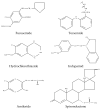Nephrotic Syndrome: From Pathophysiology to Novel Therapeutic Approaches
- PMID: 38540182
- PMCID: PMC10968602
- DOI: 10.3390/biomedicines12030569
Nephrotic Syndrome: From Pathophysiology to Novel Therapeutic Approaches
Abstract
Nephrotic edema stands out as one of the most common complications of nephrotic syndrome. The effective management of hypervolemia is paramount in addressing this condition. Initially, "the underfill hypothesis" suggested that proteinuria and hypoalbuminemia led to fluid extravasation into the interstitial space, causing the intravascular hypovolemia and activation of neurohormonal compensatory mechanisms, which increased the retention of salt and water. Consequently, the recommended management involved diuretics and human-albumin infusion. However, recent findings from human and animal studies have unveiled a kidney-limited sodium-reabsorption mechanism, attributed to the presence of various serine proteases in the tubular lumen-activating ENaC channels, thereby causing sodium reabsorption. There is currently no standardized guideline for diuretic therapy. In clinical practice, loop diuretics continue to be the preferred initial choice. It is noteworthy that patients often exhibit diuretic resistance due to various factors such as high-sodium diets, poor drug compliance, changes in pharmacokinetics or pharmacodynamics, kidney dysfunction, decreased renal flow, nephron remodeling and proteasuria. Considering these challenges, combining diuretics may be a rational approach to overcoming diuretic resistance. Despite the limited data available on diuretic treatment in nephrotic syndrome complicated by hypervolemia, ENaC blockers emerge as a potential add-on treatment for nephrotic edema.
Keywords: ENaC-blockers; diuretic resistance; nephrotic syndrome; serin protease; underfill and overfill hypothesis.
Conflict of interest statement
The authors declare no conflicts of interest.
Figures




References
Publication types
Grants and funding
LinkOut - more resources
Full Text Sources

